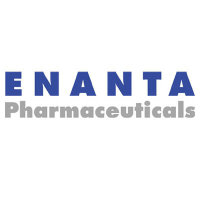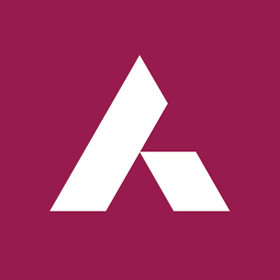Exco Technologies Ltd
TSX:XTC

| US |

|
Johnson & Johnson
NYSE:JNJ
|
Pharmaceuticals
|
| US |

|
Berkshire Hathaway Inc
NYSE:BRK.A
|
Financial Services
|
| US |

|
Bank of America Corp
NYSE:BAC
|
Banking
|
| US |

|
Mastercard Inc
NYSE:MA
|
Technology
|
| US |

|
UnitedHealth Group Inc
NYSE:UNH
|
Health Care
|
| US |

|
Exxon Mobil Corp
NYSE:XOM
|
Energy
|
| US |

|
Pfizer Inc
NYSE:PFE
|
Pharmaceuticals
|
| US |

|
Palantir Technologies Inc
NYSE:PLTR
|
Technology
|
| US |

|
Nike Inc
NYSE:NKE
|
Textiles, Apparel & Luxury Goods
|
| US |

|
Visa Inc
NYSE:V
|
Technology
|
| CN |

|
Alibaba Group Holding Ltd
NYSE:BABA
|
Retail
|
| US |

|
JPMorgan Chase & Co
NYSE:JPM
|
Banking
|
| US |

|
Coca-Cola Co
NYSE:KO
|
Beverages
|
| US |

|
Walmart Inc
NYSE:WMT
|
Retail
|
| US |

|
Verizon Communications Inc
NYSE:VZ
|
Telecommunication
|
| US |

|
Chevron Corp
NYSE:CVX
|
Energy
|
Utilize notes to systematically review your investment decisions. By reflecting on past outcomes, you can discern effective strategies and identify those that underperformed. This continuous feedback loop enables you to adapt and refine your approach, optimizing for future success.
Each note serves as a learning point, offering insights into your decision-making processes. Over time, you'll accumulate a personalized database of knowledge, enhancing your ability to make informed decisions quickly and effectively.
With a comprehensive record of your investment history at your fingertips, you can compare current opportunities against past experiences. This not only bolsters your confidence but also ensures that each decision is grounded in a well-documented rationale.
Do you really want to delete this note?
This action cannot be undone.

| 52 Week Range |
5.28
7.8
|
| Price Target |
|
We'll email you a reminder when the closing price reaches CAD.
Choose the stock you wish to monitor with a price alert.

|
Johnson & Johnson
NYSE:JNJ
|
US |

|
Berkshire Hathaway Inc
NYSE:BRK.A
|
US |

|
Bank of America Corp
NYSE:BAC
|
US |

|
Mastercard Inc
NYSE:MA
|
US |

|
UnitedHealth Group Inc
NYSE:UNH
|
US |

|
Exxon Mobil Corp
NYSE:XOM
|
US |

|
Pfizer Inc
NYSE:PFE
|
US |

|
Palantir Technologies Inc
NYSE:PLTR
|
US |

|
Nike Inc
NYSE:NKE
|
US |

|
Visa Inc
NYSE:V
|
US |

|
Alibaba Group Holding Ltd
NYSE:BABA
|
CN |

|
JPMorgan Chase & Co
NYSE:JPM
|
US |

|
Coca-Cola Co
NYSE:KO
|
US |

|
Walmart Inc
NYSE:WMT
|
US |

|
Verizon Communications Inc
NYSE:VZ
|
US |

|
Chevron Corp
NYSE:CVX
|
US |
This alert will be permanently deleted.
Exco Technologies Ltd
Exco Technologies Ltd. engages in the designing, development and manufacturing of dies, moulds, components and assemblies, and consumable equipment for the die-cast, extrusion and automotive industries. The company is headquartered in Markham, Ontario and currently employs 4,700 full-time employees. The firm operates through two segments: Casting and Extrusion Technology (Casting and Extrusion) and Automotive Solutions. The Casting and Extrusion segment designs and engineers tooling and other manufacturing equipment. The segment operations are for automotive and other industrial markets in North America. The Automotive Solutions segment produces automotive interior components and assemblies primarily for seating, cargo storage and restraint for sale to automotive manufacturers and tier one suppliers. The firm operates in approximately 15 strategic locations around seven countries and serves various customer base.
Exco Technologies Ltd. engages in the designing, development and manufacturing of dies, moulds, components and assemblies, and consumable equipment for the die-cast, extrusion and automotive industries. The company is headquartered in Markham, Ontario and currently employs 4,700 full-time employees. The firm operates through two segments: Casting and Extrusion Technology (Casting and Extrusion) and Automotive Solutions. The Casting and Extrusion segment designs and engineers tooling and other manufacturing equipment. The segment operations are for automotive and other industrial markets in North America. The Automotive Solutions segment produces automotive interior components and assemblies primarily for seating, cargo storage and restraint for sale to automotive manufacturers and tier one suppliers. The firm operates in approximately 15 strategic locations around seven countries and serves various customer base.
Revenue: Fiscal 2025 revenue was approximately $615 million, with Q4 revenue at $150.7 million, down 3% year-over-year.
Profitability: Q4 net income increased to $8.2 million ($0.22 per share), mainly due to tax-related items, despite lower segment profits.
Segment Performance: Automotive Solutions and Casting & Extrusion both saw Q4 sales declines due to customer delays, unfavorable mix, and ongoing macro/tariff pressures.
Free Cash Flow: Free cash flow remained strong at roughly $41 million for the year, supporting investments and shareholder returns.
Guidance: Management withdrew previously announced fiscal 2026 targets due to tariff uncertainties but remains confident in long-term growth.
Outlook: Management sees demand stabilizing or improving across segments, with strong quoting activity in die-cast tooling and signs of recovery in Automotive Solutions.





































